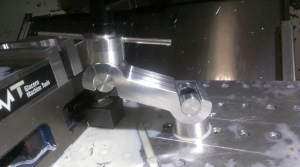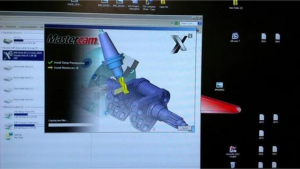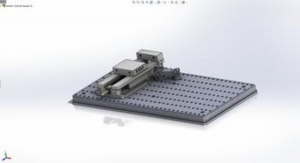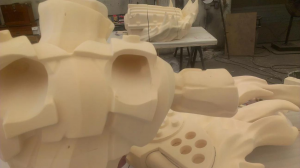

The configuration of your CAM package will have a great impact on your shop’s workflow. This is often where the information flow in your shop starts. All data pertaining to a particular job must be gathered and flow from here out to the shop floor in a fast, concise, and efficient manner. Too often, shops will purchase and install their CAM package of choice and the chips start flying the second they can lay down a toolpath. Here is a shortlist of configurations that should be done when your cam is just up and running that can save your shop hours of wasted energy.
1) Modifying your postprocessors
If your programmers or your operators are reading and editing code, they’re wasting money. Let the CAM work for you. I’m sure your guys are great highly skilled individuals but your cam software is far more consistent than any human. Like your shop floor guys, your cam software needs clear instructions and those come from your postprocessors. Just a few edits can save your staff from ever having to read a line of code. I can tell you firsthand that once you’ve developed and customized your posts to your machines and the way you like to work, it’s an indescribable confidence boost to your team.
2) Developing a clear set-up sheet, tool lists, and documentation
This is a fun one because now we can start to drill down to the nuts and bolts of your organization. Information flow is critical in the machine shop. Who needs what information and how that information is presented and where it comes from can have a huge impact on the overall workflow of your business. What info needs to make it to your saw guy, machine operator, QC, and tool room? How much paper is going to be floating around as travelers? Who needs to sign off on it? Every shop is different and even some jobs have different needs from others. it’s important to know that you’re not limited to the generic set-up sheet templates included in your Mastercam installation. Any data you’d like to track and utilize can be incorporated into these forms. Clear documentation is critical to your overall profitability.
3) Design a workholding CAD library and start using machine simulation!

Not only will doing this speed up your programming, but it will also greatly enhance safety, confidence, and the quality of your set-up documentation. While it’s true that machine simulation has been a godsend to multiaxis machine programming, the same is applicable to your common 3-axis mills, not to mention horizontals, for the same reasons. Being able to space out fixtures and stock, specify bolts and hardware, and more importantly to verify transitions between operations virtually before sending a single block of code to the machine is essential to running a lean machine shop.
Operation Libraries
I have a confession to make. My efficiency in CNC programming is less a product of my intellectual prowess and more closely related to my unparalleled laziness. I got into this field because I enjoyed the creativity and problem solving however I only enjoy it the first time. No matter how complex the parts you make are, there are still operations performed the same way repeatedly. I submit to you that if you’re not using op libraries, you’re not going to enjoy programming for very long. Holemaking is the obvious application for op libraries. Even for straight thru-holes, I have saved operations for spot, drill, and ream because I’m far too lazy to create those three simple operations over and over again. On the more creative side, op libraries can be used to group together any number of operations you find yourself creating on a regular basis and reduce that to importing the ops and selecting some geometry, and maybe changing a tool or two. One that I use the most often is one set I’ve named “Alumapart” and it includes a face, dynamic mill, contour, and 2d chamfer contour toolpath. These ops are saved with my most common aluminum tools and only require me to select some geometry, regenerate and post. Op libraries can be likened to a sewer. What you get out of it depends upon what you put into it. You can sit down and build out ops with specific tools or you can build generic groups of operations that will take a little editing once imported into your MCX file. My suggestion when you’re first starting out would be to take the time after you’ve just created an op or group of ops that you feel you’ll be continuously using and export it immediately. Later, in your newfound copious amounts of free time, you can review how they are sorted and where they are stored.
Get some training
Machinists are a proud group of people. Sometimes too proud. (Myself included) If you’re new to a software, find someone to show you how to use it. Even if you’re a veteran and just upgrading to a new version of a software you’re already proficient in, don’t hesitate to take some training to better utilize all of the new features of your cam system. No matter how robust your software suite is, it’s still just a tool. Keep your skills in using that tool honed and up to date or you could be left behind.
If you’d like some assistance with any of these or other CNC programming-related tasks, feel free to contact us here at ECS. Don’t forget to like us on Facebook!



The configuration of your CAM package will have a great impact on your shop’s workflow. This is often where the information flow in your shop
We look forward to working with you. Fill out a form below and someone from our team will be in touch with you shortly.
21 Eastbrook Bend Peachtree City, GA 30269
© 2023 by Expert CNC Solutions. All right reserved. Site created and managed by Muldrow Marketing.